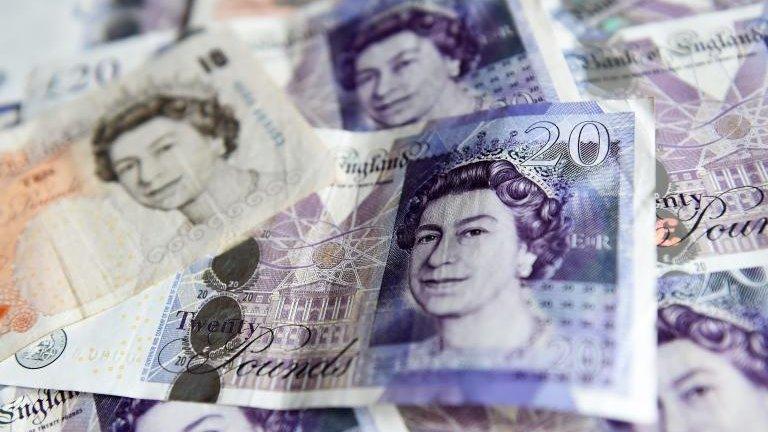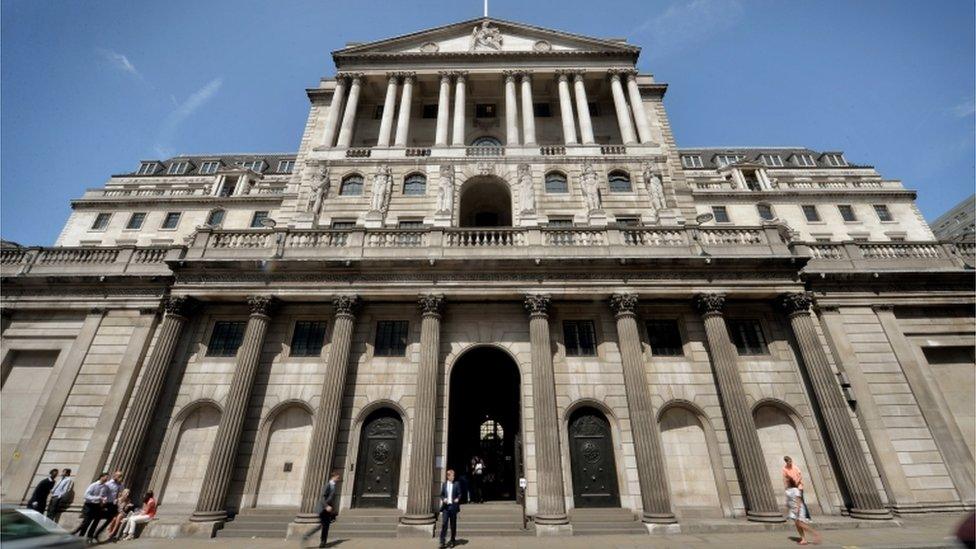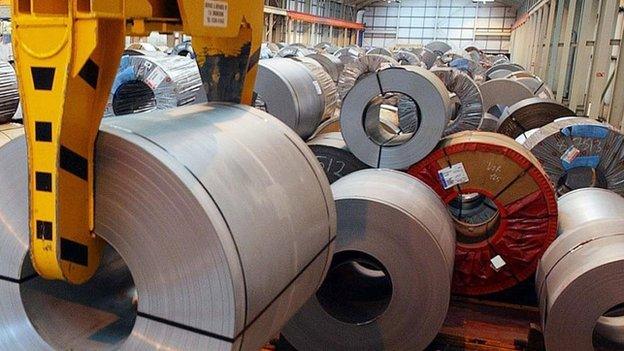UK current account deficit narrows
- Published

The UK's current account deficit narrowed much faster then expected in the second quarter of the year.
The current account figure from the Office for National Statistics, external measures the difference between imports and exports of trade and investment.
The deficit narrowed from £24bn, or 5.2% of national income, in the first quarter of 2015, to £16.8bn, or 3.6% of GDP, in the second.
The ONS also announced, external a number of revisions to economic growth.
It revised upwards the growth figures for years between 2011 and 2013, which meant that the economy is now 5.9% above its pre-recession peak, compared with previous estimates of 5.2%.
It also means that the economy passed its pre-recession level in the second quarter of 2013, which was a quarter earlier than previously thought.
"Upward revisions to GDP in earlier years mean that growth has averaged just over 2% in the six years since the economy started growing again in mid-2009," said Andrew Sentance at PwC.
"This is respectable growth in the new normal post-crisis world and puts the UK among the leading major western economies - alongside the US and Germany - in terms of growth over the recovery as a whole."
The third estimate of growth in the second quarter was 0.7%, unchanged from the previous estimate.
But the annual growth figure for the second quarter was revised down from 2.6% to 2.4%.

Analysis: Robert Peston, BBC economics editor
It is the first time in two years that the rate at which we've been shipping in debt from abroad dropped comfortably below 5% of GDP - having widened to a record 6% plus of GDP on a couple of occasions since the middle of 2013.
And what is striking is that the improvement was down to the part of the current account that for the past 30 years has been intractably lacklustre, viz our net sales of goods and services.
What's more, this improvement took place in spite of a strengthening of the pound by almost 6% on a trade-weighted basis in the first half of the year.

The ONS also announced one of the first major figures that will contribute to the GDP number for the third quarter.
Growth in the service sector slowed in July compared with the previous month.
The sector accounting for 79% of the UK economy grew 0.2%, compared with a rate of 0.6% in June, the ONS estimated, external.
The sector grew 2.8% in July compared with the same month of 2014.
Analysts suggested that there were signs the UK's economic growth in the third quarter of the year would not be able to keep up the pace achieved in the second quarter.
"However, we expect that the recovery will pick up pace again soon," said Paul Hollingsworth from Capital Economics.
"After all, business and consumer confidence remains strong, credit is cheap and becoming more available, and households are yet to spend all of their windfall from lower energy and food prices."
Real household disposable income, external per head, which is a measure of the standard of living, rose 1.5% in the second quarter compared with the first, and was up 3.3% compared with the same quarter a year ago.
- Published30 September 2015
- Published22 September 2015

- Published18 September 2015

- Published18 September 2015
